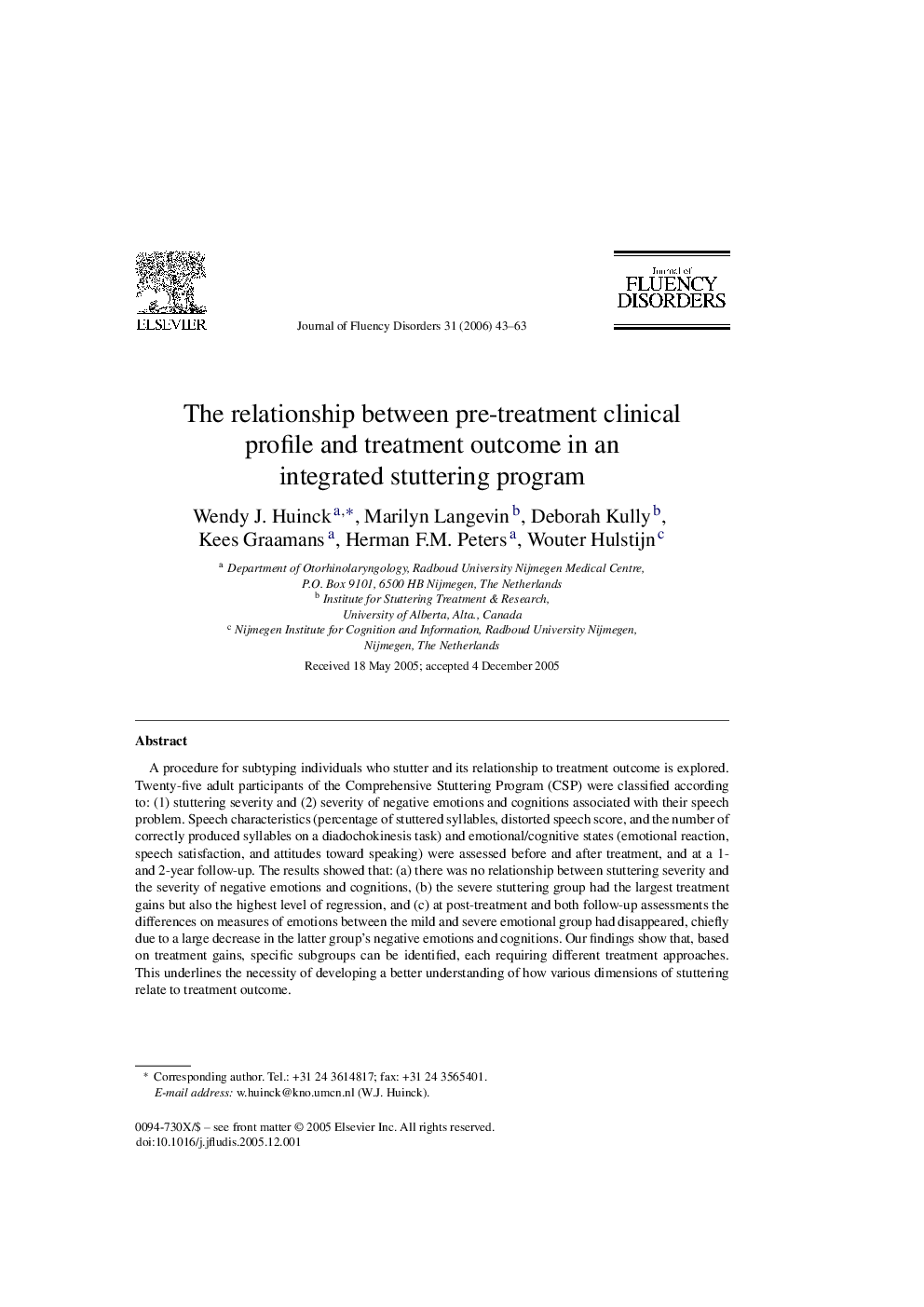| Article ID | Journal | Published Year | Pages | File Type |
|---|---|---|---|---|
| 911716 | Journal of Fluency Disorders | 2006 | 21 Pages |
A procedure for subtyping individuals who stutter and its relationship to treatment outcome is explored. Twenty-five adult participants of the Comprehensive Stuttering Program (CSP) were classified according to: (1) stuttering severity and (2) severity of negative emotions and cognitions associated with their speech problem. Speech characteristics (percentage of stuttered syllables, distorted speech score, and the number of correctly produced syllables on a diadochokinesis task) and emotional/cognitive states (emotional reaction, speech satisfaction, and attitudes toward speaking) were assessed before and after treatment, and at a 1- and 2-year follow-up. The results showed that: (a) there was no relationship between stuttering severity and the severity of negative emotions and cognitions, (b) the severe stuttering group had the largest treatment gains but also the highest level of regression, and (c) at post-treatment and both follow-up assessments the differences on measures of emotions between the mild and severe emotional group had disappeared, chiefly due to a large decrease in the latter group's negative emotions and cognitions. Our findings show that, based on treatment gains, specific subgroups can be identified, each requiring different treatment approaches. This underlines the necessity of developing a better understanding of how various dimensions of stuttering relate to treatment outcome.Educational objectives: The reader will be able to: (1) describe why stuttering severity and negative emotions and cognitions that are related to stuttering should be investigated separately and (2) describe how treatment outcome relates to subtypes of persons who stutter.
